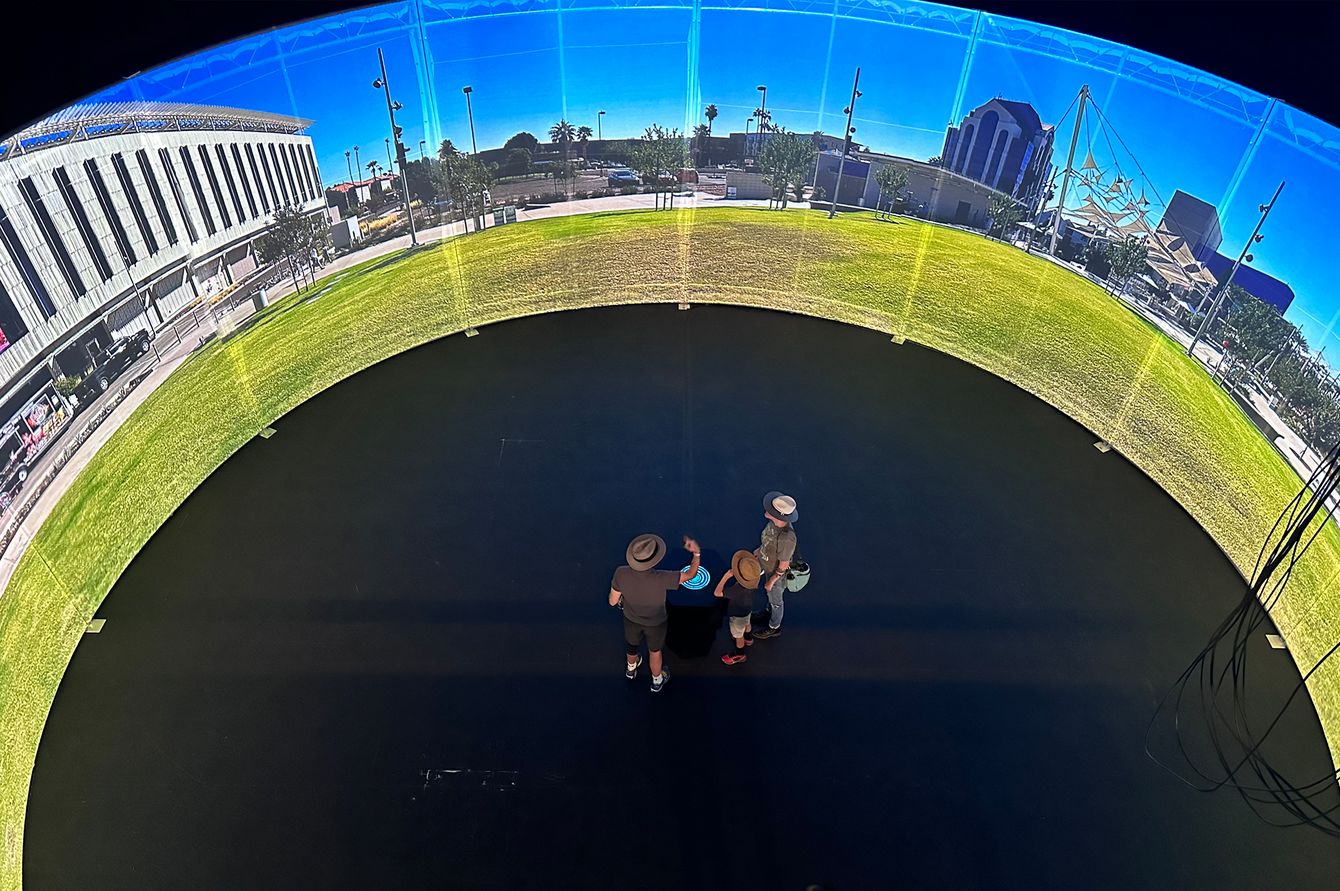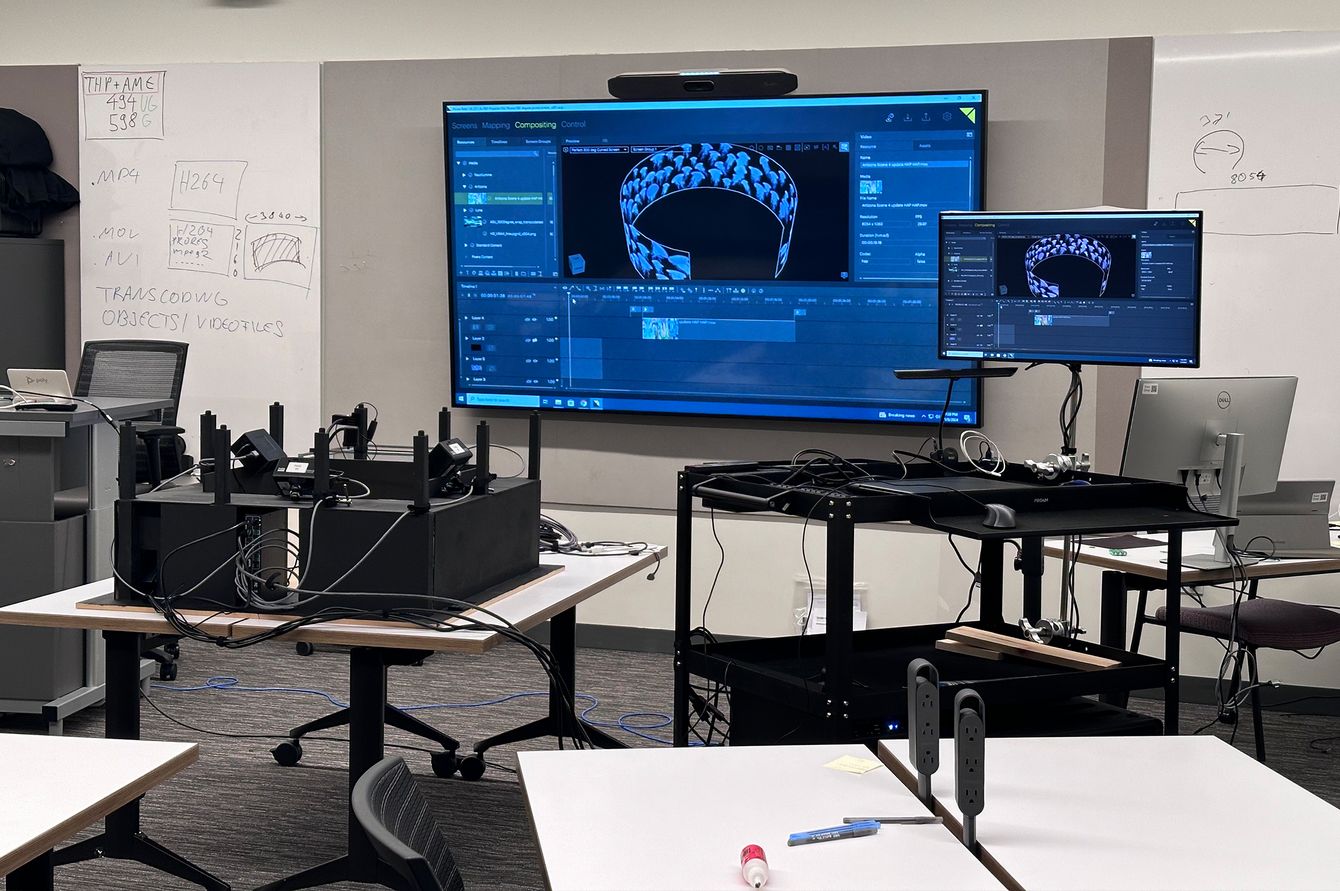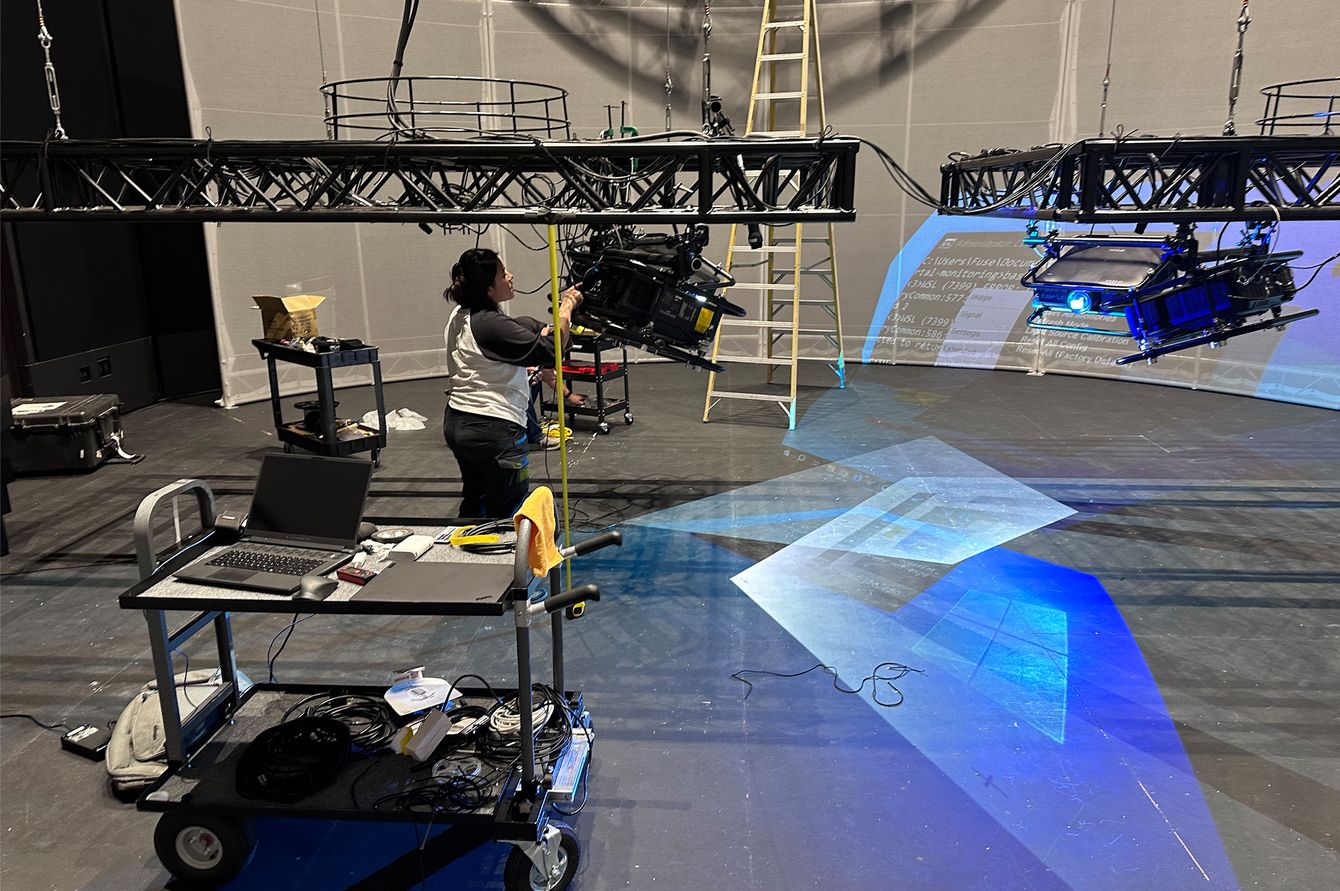Rewriting Lesson Plans: PIXERA’s Role in the Immersive Experiences Curriculum at Arizona State University
Arizona State University (ASU) is at the forefront of innovative education, particularly in the field of immersive experiences.



Wallern a.d. Trattnach (Austria), 4th March 2024
Sven Ortel, Professor of Practice at ASU, sheds light on how PIXERA, AV Stumpfl’s real-time media server platform, has become an integral part of their curriculum, revolutionizing the way students engage with immersive technology. Ortel's journey with PIXERA began with a vision to enhance the learning experience for students enrolled in ASU's immersive experiences curriculum. He recognized the need for a versatile tool that could replicate real-world scenarios within the classroom environment. PIXERA emerged as the perfect solution due to its flexibility and robust features.
“We built the program so they can focus on the things that they are actually interested in,” explains Ortel. “So many students grow up in a world where everybody tells them what the next big thing is, and what they should be paying attention to: what they need to learn to get a job. They’re asking: ‘If I want to work on virtual production, what should I learn?’ ‘Where should I start?’ ‘Who should I talk to?’ They’re looking for mentorship and guidance, and that’s what we offer them at ASU.”
Enhancing Classroom Learning:
Ortel's innovative approach involves replicating performance spaces within the classroom using scale models and screens connected to workstations running PIXERA. This setup allows students to familiarize themselves with the principles of immersive technology in a small-scale, controlled environment. By providing equitable access to immersive experiences, Ortel ensures that students can explore and experiment without limitations imposed by resource constraints.
Facilitating Collaborative Learning:
ASU's MIX Center serves as a hub for interdisciplinary collaboration, where students from various backgrounds converge to explore the convergence of technology and storytelling. Ortel's class, part of this philosophy, encourages students to pitch immersive experience projects, fostering teamwork and cross-disciplinary collaboration. Through hands-on experience, students not only develop technical skills but also hone soft skills essential for the workplace.
Innovative Teaching Approaches:
Ortel's teaching philosophy revolves around demystifying emerging technologies and workflows, empowering students to navigate complex concepts with confidence. By documenting and standardizing workflows, he ensures continuity and accessibility for future cohorts. With its open API, PIXERA is especially well suited to this sort of technological exploration.
“Part of our job as educators is to research new workflows, document them, and then see whether they can become standardized in some shape or form. It could be simple things like I taught myself how to use a professional LIDAR scanner and pass that information on to the students, or developing a model that allows us to best predict where to place a screen. Most of these are new concepts to them.”
The integration of PIXERA into ASU's curriculum underlines the university's dedication to fostering innovation and collaboration. Through Ortel's leadership and vision, students are equipped with the tools and knowledge to thrive in a rapidly evolving landscape of immersive experiences. ASU's immersive experiences curriculum, powered in part by PIXERA, represents a pioneering approach to education that prepares students for the challenges and opportunities of the digital age.
Links:
https://www.asu.edu/